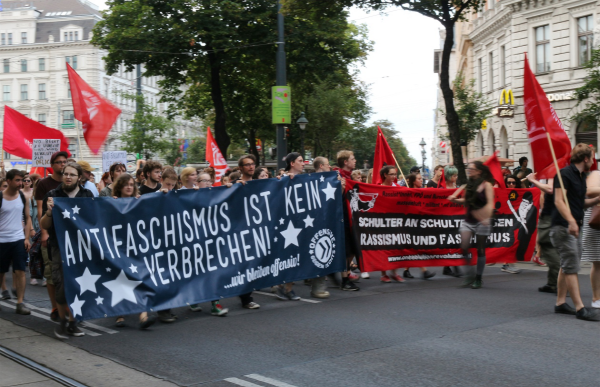Martin Dolezal is the first researcher to investigate forms of political protest on a variety of issues in Austria between 1998 and 2016. The political scientist is screening press releases published by the Austrian Press Agency. In an international comparison, Austrian society is less sluggish than its reputation would suggest when it comes to protests. Environmental concerns have long been at the top of protest issues.

In an international comparison, Austria is seen as rather consensus-oriented. For many years, a functioning social partnership and stable majorities in the government were regarded as the reason for comparatively few protests. But is that even true? With the support of the Austrian Science Fund FWF, Martin Dolezal is currently looking for the answer to this question at the Institute for Advanced Studies. Dolezal is screening the press releases published by the national news agency APA (Austria Presse Agentur) between 1998 and 2016.
In a first step, he is recording protest events irrespective of location or topic. The ultimate objective is to generate a data set enriched with different parameters such as number of participants, organizer of the protest, demands raised and mode of protesting. In this way, the political scientist intends to identify possible changes in conflict structures in Austria, considering them, among other things, against the background of the respective political government constellations at national and regional level.
Forms and spreading of unconventional participation
“Unconventional participation” is the umbrella term Martin Dolezal uses for political participation that goes beyond ticking a box on a ballot paper. There are ‘soft’ and ‘hard’ modes: petitions or vigils, flash mobs, demonstrations or protests involving damage to property or even personal injury. The latter are the exception in Austria, incidentally. In professional scientific discourse, Western societies are currently thought to subscribe to the “Social Movement Society” thesis of Meyer and Tarrow, which states that political protests are no longer an unusual practice and involve people of all ages, regardless of gender or ideology. Martin Dolezal would “not fully endorse this diagnosis for any society in the world”. However, the relative importance of individual topics is diminishing as new topics keep emerging in protests. This is indeed the case in Austria.
How does Austria protest?
The data source selected for the current basic-research project has the advantage of offering an even geographical distribution of reports from all over Austria: “The total amount of all protest events is unknown. By searching for defined keywords, we try to reach an approximation and capture data in a structured way. Sorting out the false positive results is a time-consuming task because the term ‘demonstration’ can also refer to the launch of a new car model and protests are also voiced by representatives of professional chambers. I don’t include the latter because theirs is an exclusively verbal or written protest – and not an action that can be defined as a protest event,” notes Martin Dolezal in explaining the sorting process which cannot be automated.
First evaluations of the project, which runs until 2020, have shown that the year 2000 with its political turning point brought a peak in political participation on the streets, but this remains an outlier. Otherwise, protest intensity has remained relatively constant over the 19-year observation period, but is not below the international average. Weighted according to the number of participants across all protest forms the following ranking of issues has emerged: welfare state, environment and economy. The first place came as a surprise, but there had been far-reaching signature-collecting campaigns relating to old-age pensions. An evaluation on the basis of the number of protest events ranks the environment as top issue, followed in second and third place by socio-political issues and the economy. This goes to show that even before the “Fridays for Future” and the climate crisis, environmental issues were the number one topic of protests in Austria.
Migration mobilizes both sides
In a detailed evaluation, Martin Dolezal looked at how the issue of migration has become manifest in the protests. With a view to this topic it is worth noting that usually just one side, i.e. either the pro- or the contra-faction, chooses unconventional participation. Traditionally, it is the organizers of to the political left who call for protest. Migration issues led to a sharp temporary hike in protests in 2015 and 2016 – triggered by the inflow of refugees. Another aspect Dolezal finds interesting is that in this particular case protests were initiated by both left-wing and right-wing stakeholders.
The findings prove that just as in other countries, political participation in Austria shows a dynamic increase. Nonetheless, the country does have one distinguishing feature: while protests and similar activities are on the rise, voter turnout and party membership remain at a very high level.

